Hyundai has added a couple of new off-road focused packages to its popular Santa Fe seven-seat large SUV.
WATCH: Paul’s video review of the Santa Fe Hybrid Calligraphy AWD
There are two versions available – XRT Adventure, and XRT Peak – and they are packages that your Hyundai dealership can add to your new car pre-delivery.
If you opt for them before you drive your new Santa Fe home, you also get a full five-year, unlimited-kilometre manufacturer-backed warranty on the parts fitted, which can’t be said for other options you might add post-delivery.
In this review you’ll find out what the XRT treatments bring, whether they’re worth the money, and how the XRT-equipped Santa Fes differ from the many ute-based large off-road SUVs you might otherwise be considering.
How does the Hyundai Santa Fe compare?
View a detailed breakdown of the Hyundai Santa Fe against similarly sized vehicles.
Hyundai
Santa Fe
How much does the Hyundai Santa Fe cost?
You can apply the XRT packages to any all-wheel drive version of the new fifth-generation Santa Fe launched recently, which makes sense since it would be silly to add them to the entry-level front-wheel drive variant.
| Model | Price before on-road costs |
|---|---|
| 2025 Hyundai Santa Fe Hybrid FWD | $55,500 |
| 2025 Hyundai Santa Fe Hybrid AWD | $58,500 |
| 2025 Hyundai Santa Fe Hybrid Elite AWD | $65,000 |
| 2025 Hyundai Santa Fe Hybrid Calligraphy AWD seven-seat | $75,000 |
| 2025 Hyundai Santa Fe Hybrid Calligraphy AWD six-seat | $75,500 |
While Santa Fe XRT is a standalone model variant in the US, Hyundai Australia says its XRT packages were developed by a local engineering team in collaboration with the Hyundai America Technical Centre in California, and that they were tested both on- and off-road, including steep unsealed climbs and rocky and sandy descents.
There are two XRT packages to choose from. The XRT Adventure Option Pack costs $6900 and the XRT Peak Option Pack costs $9900. So neither of them comes cheap and the price of the range-topping Santa Fe Hybrid Calligraphy with XRT Peak Option Pack, as tested here, is a cool $84,900 plus on-road costs.
However, both XRT packs bring serious suspension and wheel/tyre upgrades as a minimum, and pricing for each of them includes both parts and labour, as well as the same five-year factory warranty as the Santa Fe itself when fitted by a Hyundai dealership at the time of purchase.
To see how the Hyundai Santa Fe stacks up against its rivals, use our comparison tool.
What is the Hyundai Santa Fe like on the inside?
It’s no different to the standard versions of the new Santa Fe – and that may be a problem for some of you who might want some unique interior branding or highlights to make you feel better about the extra money you’ve spent.
Having said that, there’s no mistaking the XRT treatment from the outside and, who knows, special XRT-badged seat covers or the like may become available at some point. Hyundai also offers a host of useful interior accessories for the new Santa Fe, including:
- All-in-one mats (carpet and rubber, front seats and middle row): $390
- Cargo barrier (behind second-row seats): $1162
- Cargo liner for five-seat layout: $189
- Cargo liner for seven-seat layout with lining on third-row seats: $249
- Portable fridge / freezer: 25L – $1299; 36L –$1399
- Towbar kit: $1501
- Tailgate bike rack: $929
- Side awning: $371
There are plenty of other bits you might want to add too, but given there are no XRT-specific cabin extras at this stage, you can read our impressions of the classy new Santa Fe’s interior design, space, practicality and usability in our launch review coverage.
What’s under the bonnet?
At this point in time, the Santa Fe is available only in petrol-electric hybrid form. There is a powerful turbo-petrol engine option coming soon, but the current hybrid-only – or hybrid-electric vehicle (HEV) – range comes with a pretty impressive powertrain.
| Tech Specs | Hyundai Santa Fe Hybrid |
|---|---|
| Engine | 1.6L 4cyl turbo HEV |
| Power | 132kW – 1.6 T-GDI 44.2kW – e-motor Total – 172kW @ 5600rpm |
| Engine torque | 265Nm – 1.6 T-GDI 264Nm – e-motor Total – 367Nm @ 1000-4100rpm |
| Transmission | 6-speed auto |
| Driven wheels | FWD or AWD |
| Kerb weight | 1951kg – FWD 2014kg – AWD |
| Fuel economy – claimed | 5.6L/100km |
| CO2 emissions – claimed | 128g/km |
| Fuel tank size | 67 litres |
| Fuel requirement | 91 RON |
| CO2 emissions | 122g/km – FWD 129g/km – AWD |
| Maximum tow capacity | 750kg – unbraked 1650kg – braked 100kg – towball download |
All-wheel drive variants have an on-demand AWD system that will apportion torque where it’s needed, based on the situation. That is an important difference compared to a ‘proper’ selectable 4WD system incorporating high- and low-range gearing for off-road driving.
This car doesn’t have that capability, but it does have a few terrain modes for unsealed driving, including Mud, Snow and Sand.
Now, there is a price to pay when it comes to the efficiency of this model, considering the more off-road focused tyres and heavier wheels, the extra weight of the other additional gear, and the fact that it will be less aerodynamic than the standard vehicle.
As a result, I was unsurprised to see a higher on-test fuel consumption number this time around – 8.6 litres per 100km across a mix of on- and off-road testing, which is still fairly impressive for a big seven-seat wagon.
To see how the Hyundai Santa Fe stacks up against its rivals, use our comparison tool.
How does the Hyundai Santa Fe drive?
On-road
First, as with our original review of the new Santa Fe, we need to call out the safety systems. On-road, they’re frustrating. The driver monitoring camera system is too eager to interrupt, and the speed-sign recognition and warning system is a painful thing to live with, if you know the speed limits in your usual driving areas.
They both default back on each time you restart and, unlike in the Tucson, there’s no ‘mute’ button to quickly shut it all up. Hopefully that rolls out soon over-the-air.
Otherwise, we were impressed with the way the Santa Fe XRT handled itself on-road.
There’s a notable difference compared with the standard model, as you’d expect with raised suspension and bigger, chubbier tyres.
The standard model drives pretty nicely, but the XRT-fettled SUV has a more purposeful feel on the sealed stuff, with more softness over sharp edges due to the extra tyre sidewall, and a more rigid and solid feel over larger bumps.
The steering feels a bit different, too. It isn’t quite as direct – that’s typical of an off-road focused tyre – but the Pirelli Scorpion A/T rubber still has a good amount of purchase on the road. Some other tyres that are this aggressive can squeal and squelch in mixed driving, but these are pretty grippy and very quiet.
I was impressed that it didn’t have much more tyre noise at all legal driving speeds.
And the powertrain? Well, to me it felt like the system was using its petrol engine more during my testing than I recall the standard car doing. That’s not surprising, given the fact it has to work harder to turn those wheels, and it’s up higher in the air so the aerodynamics aren’t as good.
Add to that the roof-rack and platform fitted to the Peak version, in addition to the bonnet protector and visor package on the window-tops, and wind noise is a bit more noticeable, too.
Off-road
Before we get to my driving impressions, here’s how XRT package-equipped models differ from regular Santa Fes in terms of the important off-road angles:
| Santa Fe | Santa Fe XRT | |
|---|---|---|
| Approach angle | 17 degrees | 19 degrees |
| Breakover angle | 17 degrees | 19 degrees |
| Departure angle | 20 degrees | 22 degrees |
| Ground clearance | 177mm | 210mm |
That’s 33mm or close to 1.5 inches of extra ride height, plus two degrees of extra approach and departure angle, but I’m glad the XRT has an underbody skid plate, because it really doesn’t have enough clearance to deal with seriously rutted off-road tracks.
For the most part, I was in the Mud Terrain driving mode (there is also Snow and Sand) for the off-road part of this test in the Blue Mountains, where I’ve also driven seven-seat models like the Ford Everest, and let me tell you – this is not like a ute-based ladder-frame SUV.
The monocoque design means it doesn’t have the sort of suspension travel to really deal with the type of deeply rutted trails that other off-road SUVs can deal with easily. It doesn’t have the same level of articulation, so you will see wheels cocked as you go over offset and uneven terrain.
But I have to say, the powertrain and the traction and stability control system worked really well to apportion the torque seamlessly to the wheel that had the most grip.
Sure, it would spin tyres a bit before it figured out there wasn’t any traction, but once it managed to push the grunt where it needed to go, it got out of a few situations that would have seen a standard SUV get well and truly stuck.
The skid plate copped a hiding on this test, and that’s what it’s designed to do. But the lack of more ground clearance limits the capability of this SUV and it just can’t go as far into the bush as a higher-riding off-roader.
However, as an overland SUV – the sort of vehicle that you drive for hours on end, where the journey and the scenery are more important than trying to push the limits of your vehicle off-road – it’s a superb option that will be far better on corrugated gravel outback roads, the odd firetrail and even sloping and/or wet grass than any standard Santa Fe.
It has a terrific rough-road ride, and handles sharp-edged bumps and bigger lumpy sections with ease. I hit some mud splashes with hard bedrock underneath, and it remained composed and comfortable at all times.
One advantage of the Santa Fe’s standard surround-view camera system is that it comes in handy at low speeds off-road.
There were multiple instances where I hit the camera button to see what was ahead of the vehicle (of course, I got out and walked any treacherous bits before taking the car through them!), and the Calligraphy’s auto braking system also pulled me up a few times when the sensors detected I was going to hit a stump or rocky outcrop.
The hybrid powertrain also offered a strong amount of urge in slower-speed situations, and it continued to move between EV mode or having the petrol engine kick in to assist, depending on throttle inputs and available traction levels.
And while the brakes were honest and easy to judge in slow-speed moments, the hill descent control system didn’t play ball when asked to. Some of these systems can be temperamental, I know that from experience, so it was a good thing I never got into any unnervingly steep situations, and riding the brake did the job.
What do you get?
Here’s a reminder of the standard equipment levels in all grades of the Santa Fe.
Santa Fe Hybrid highlights:
- 20-inch alloy wheels
- LED headlights
- Auto high-beam
- Proximity entry with push-button start
- Electronic parking brake with auto hold function
- 3 x drive modes – Eco, Sport, My Drive
- 3 x multi-terrain drive modes – AWD only
- Dual-zone climate control
- 10-way power-adjustable driver’s seat
- Obsidian Black cloth upholstery
- Leather-wrapped steering wheel
- 12.3-inch digital instrument cluster
- 12.3-inch infotainment touchscreen
- Over the air (OTA) software updates
- Apple CarPlay, Android Auto – wireless, wired
- Wireless smartphone charger
- Surround-view camera system
- 6-speaker sound system
- Heated front seats
- Power tailgate
- Rear privacy glass
- Full-size alloy spare wheel
Santa Fe Hybrid Elite adds:
- Silver exterior highlights
- Remote Smart Parking Assist
- Black leather seats
- Suede headlining
- 10-way power-adjustable passenger seat
- Heated steering wheel
- Bose premium audio system – 12 speakers
- Dual wireless smartphone charger
- Bluelink connected services
- Auto-dimming rearview mirror
Santa Fe Hybrid Calligraphy adds:
- Unique 20-inch wheels
- Glass sunroof
- Head-up display
- Digital camera rearview mirror
- Black Ink Nappa leather upholstery
- Relaxation function – front seats
- Memory function – front seats, mirrors
- Heated outboard second-row seats
- Ventilated front seats
- UV-C sanitisation tray
- UV and infrared insulated windscreen, front windows
The Calligraphy is also offered with a six-seat layout with second-row electrically adjustable captain’s chairs, which might offer a more plush experience but may limit practicality somewhat.
To see how the Hyundai Santa Fe stacks up against its rivals, use our comparison tool.
Options
There are currently two off-road focused XRT packages on offer and they can be applied to any all-wheel drive variant in the range.
XRT Adventure Option Pack ($6900) adds:
- 17-inch off-road wheel and tyre package
- Pirelli Scorpion A/T Plus tyres
- Satin black alloy wheels
- Mudflaps
- Underbody skid plate
- Off-road suspension kit
- New front struts, springs and hubs
- New rear dampers, springs and hubs
- 30mm increase in ride height
XRT Peak Option Pack ($9900) adds:
- 17-inch off-road wheel and tyre package
- Pirelli Scorpion A/T Plus tyres
- Satin black alloy wheels
- Mudflaps
- Underbody skid plate
- Off-road suspension kit
- New front struts, springs and hubs
- New rear dampers, springs and hubs
- 30mm increase in ride height
- Integrated black side steps with 200kg maximum loading capacity
- Hyundai genuine roof racks (80kg load capacity evenly distributed across two bars)
- Roof platform with dual channels on each plank, outer edge channels
- Dark-tinted ‘stylevisors’
Is the Hyundai Santa Fe safe?
Surprisingly, the Hyundai Santa Fe is yet to be tested by ANCAP or Euro NCAP even after having been on sale for months now.
Standard safety features across the range include:
- Autonomous emergency braking (AEB)
- Pedestrian, Cyclist detection
- Junction assist
- Adaptive cruise control with stop and go
- Blind-spot assist
- Blind Spot View Monitor
- Driver attention warning
- Forward attention warning
- Leading vehicle departure alert
- Evasive steering assist function
- Intelligent speed limit assist
- Lane Following Assist
- Lane keep assist
- Parking Collision Avoidance Assist
- Rear cross-traffic assist
- Rear occupant alert
- Safe exit assist
- Front, rear parking sensors
- Surround-view monitor – 360 camera
The Santa Fe has full airbag coverage for the third-row occupants. In fact, it has 10 airbags: dual front, driver’s knee, front centre, front side, second-row side and full-length curtain airbags.
How much does the Hyundai Santa Fe cost to run?
As mentioned, if you buy a brand-new Santa Fe, you get a five-year, unlimited-kilometre warranty, and if you get either XRT pack fitted straight away, the warranty extends to those extras too.
The Santa Fe Hybrid has an eight-year/160,000km warranty for high-voltage components like the e-motor and lithium battery.
Servicing intervals are 12 months/10,000km, which is a bit more needy than some rivals. There is also a roadside assistance program that renews every time you service your car with Hyundai.
| Service interval | Price |
|---|---|
| 12 months/10,000km | $459 |
| 24 months/20,000km | $459 |
| 36 months/30,000km | $569 |
| 48 months/40,000km | $459 |
| 60 months/50,000km | $459 |
| Total | $2405 |
To see how the Hyundai Santa Fe stacks up against its rivals, use our comparison tool.
CarExpert’s Take on the Hyundai Santa Fe
I have no doubt there’s a market for this model, which looks great and does enhance capability in mild off-road conditions, but potential buyers should be mindful of the limitations of a monocoque SUV like this in comparison to a body-on-frame 4×4 wagon.
It’s not as capable as a ute-based off-road SUV, or a purpose-built four-wheel drive, when it comes to the rough stuff. But for families that go camping regularly, or those who appreciate open-road and outback touring, it could be a great choice.
Interested in buying a Hyundai Santa Fe? Get in touch with one of CarExpert’s trusted dealers here
Click the images for the full gallery
MORE: Everything Hyundai Santa Fe


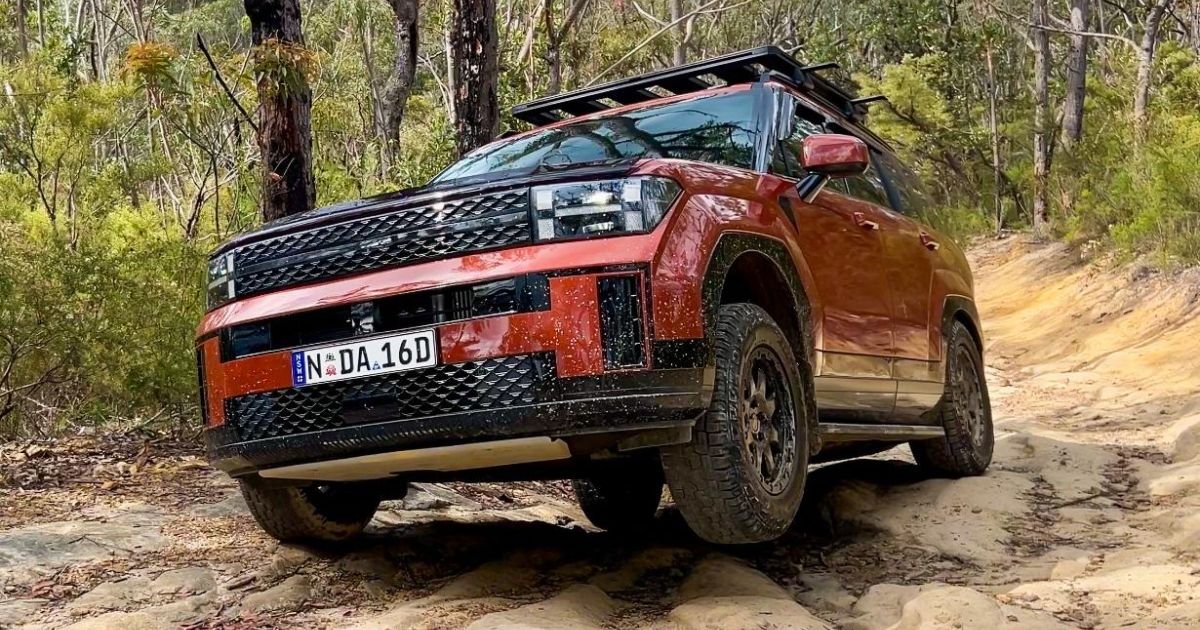
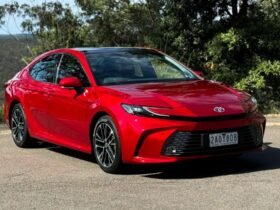
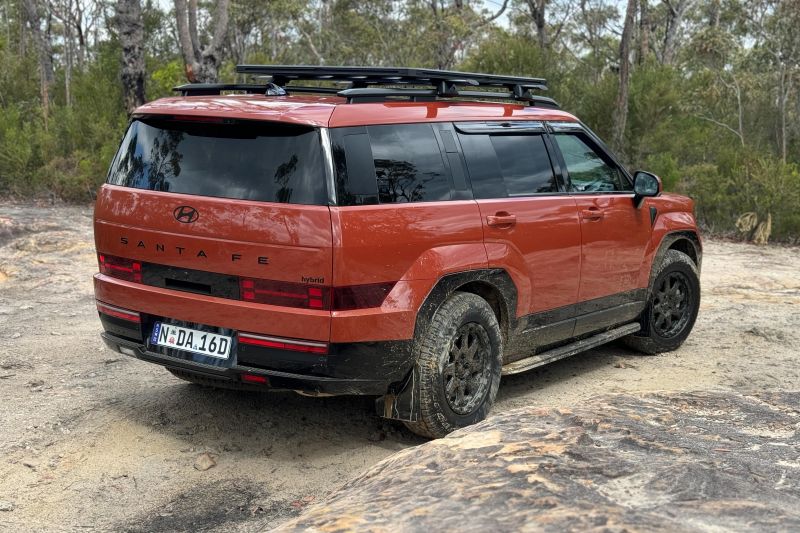
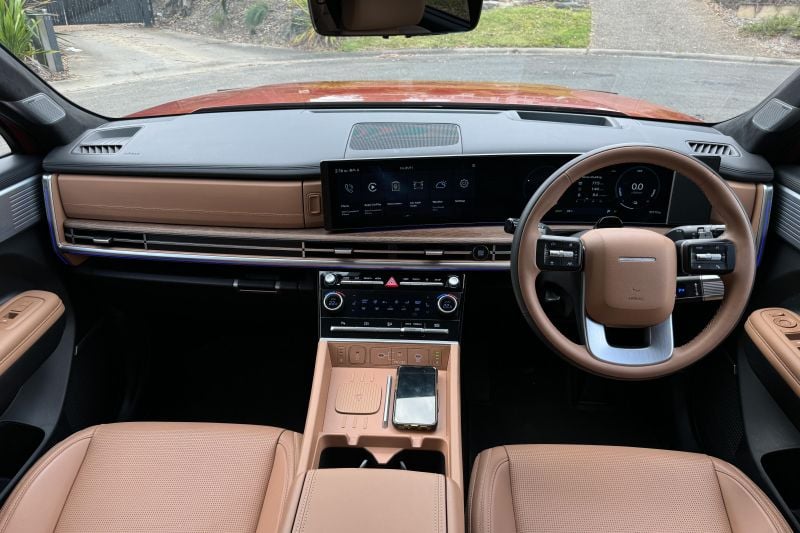
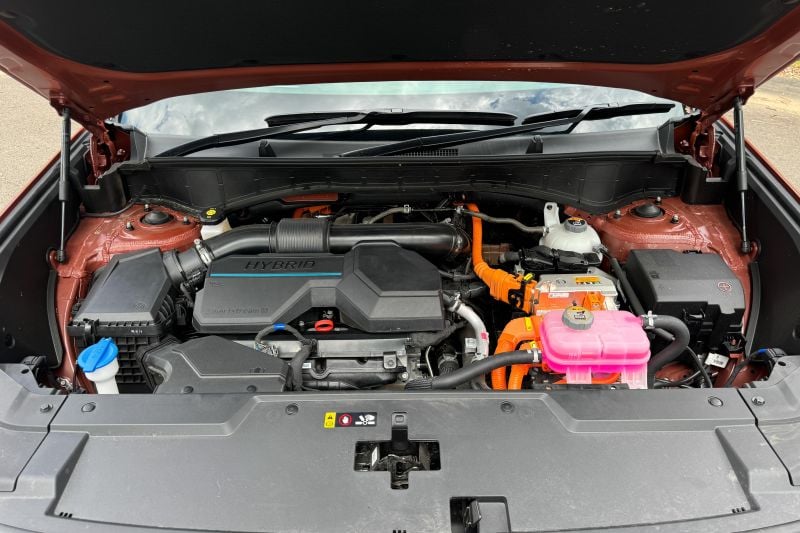

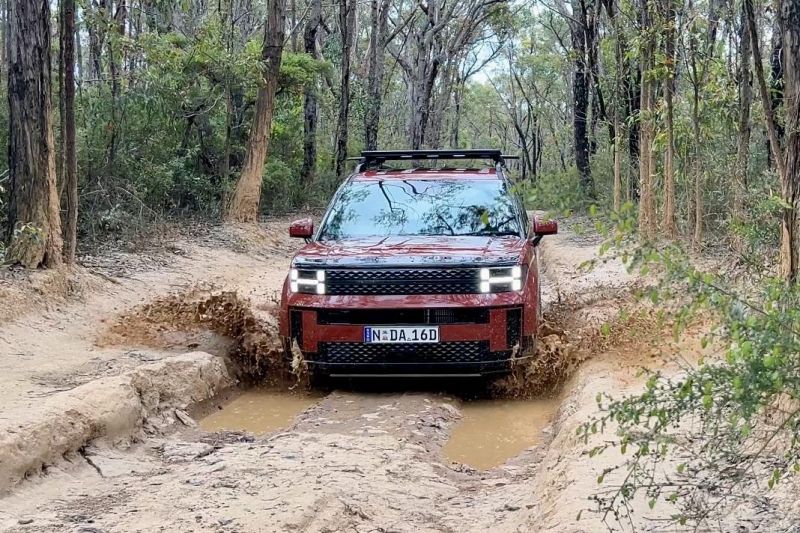
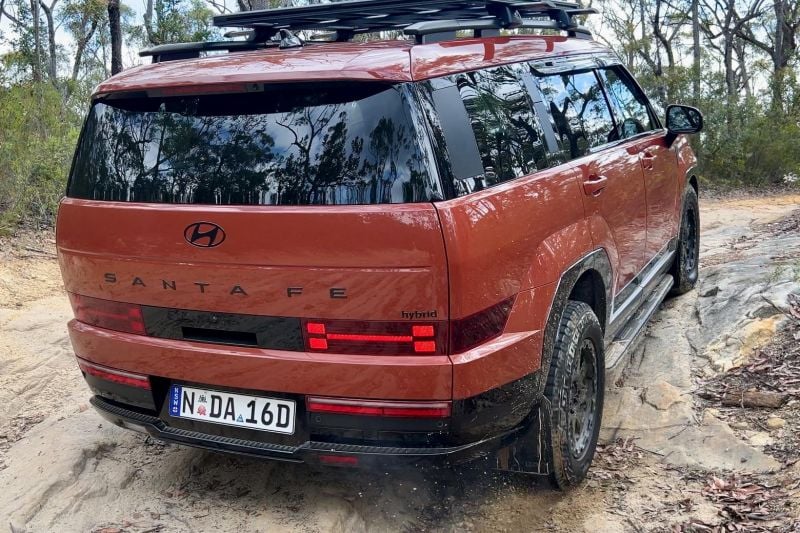
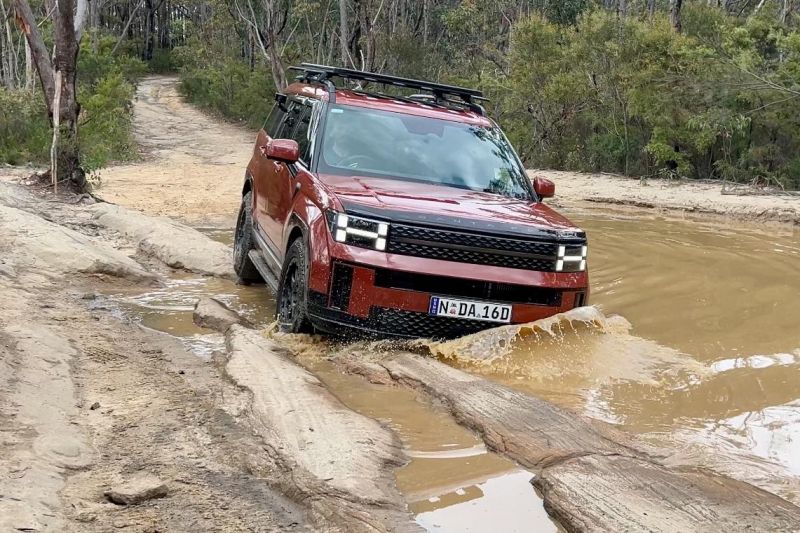
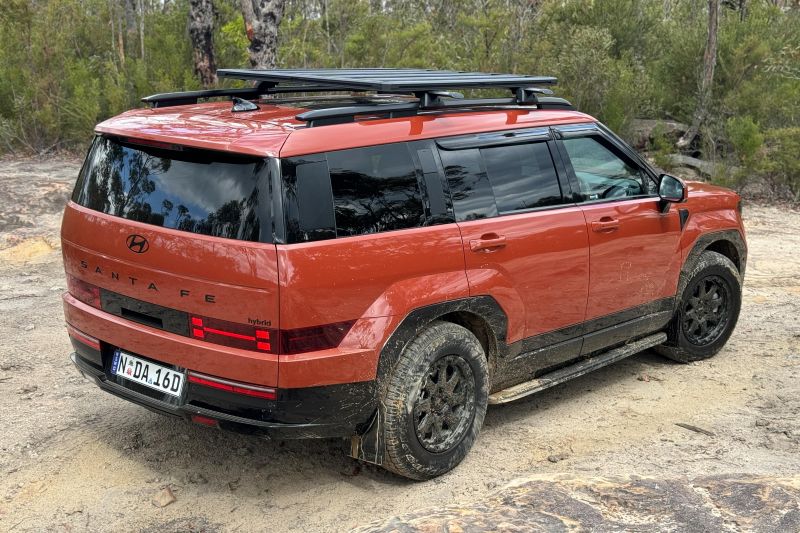
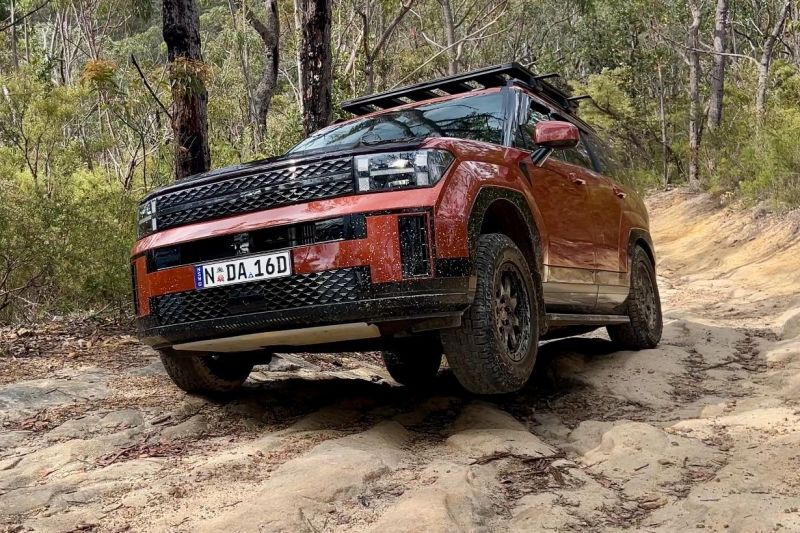
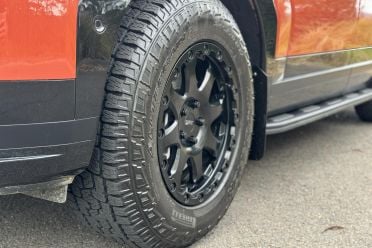
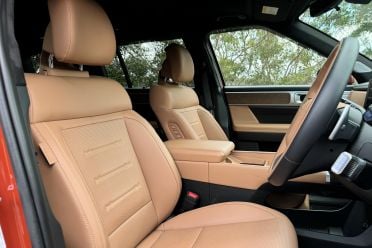
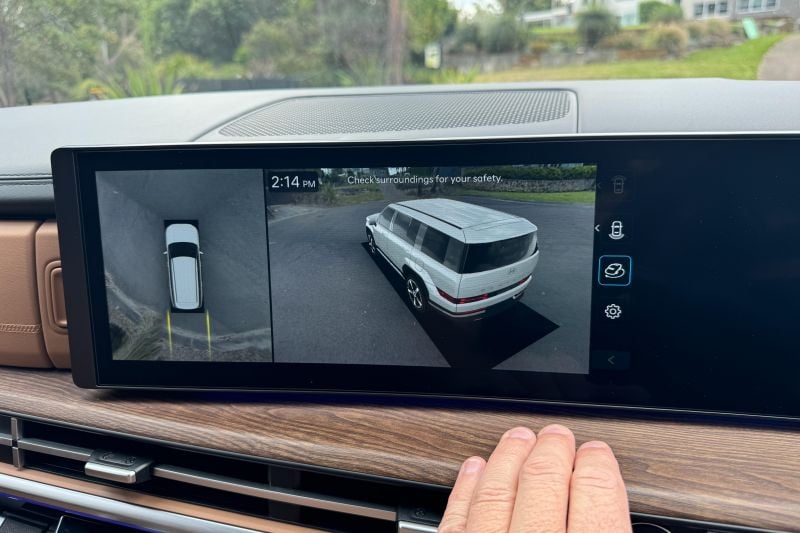
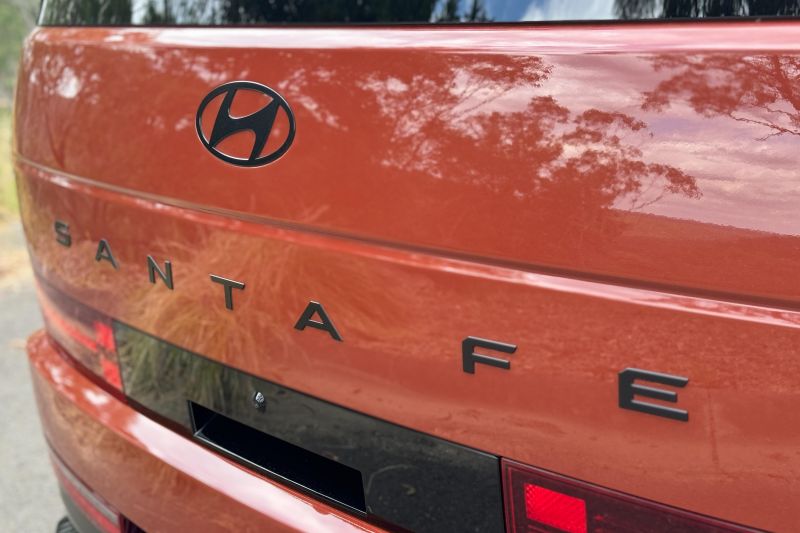
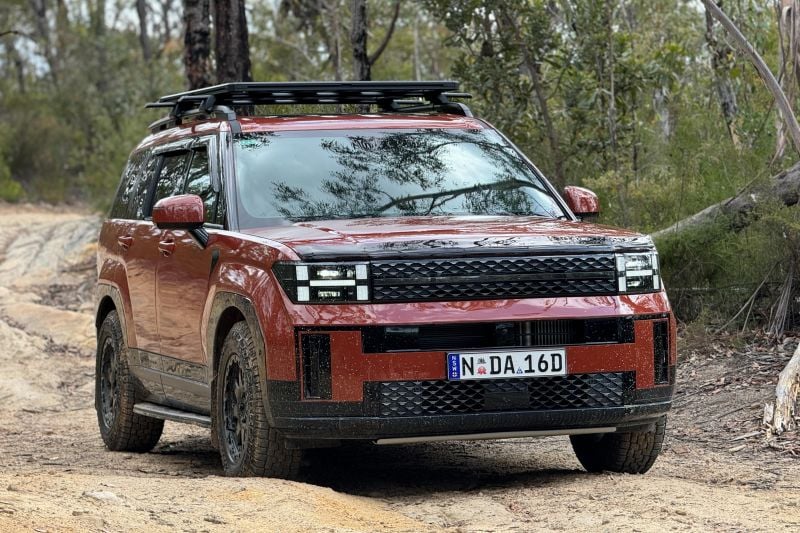




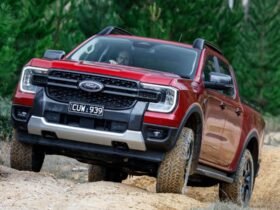
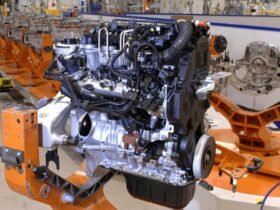

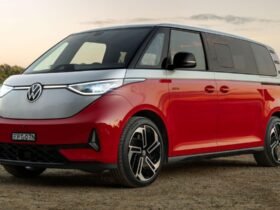

Leave a Reply